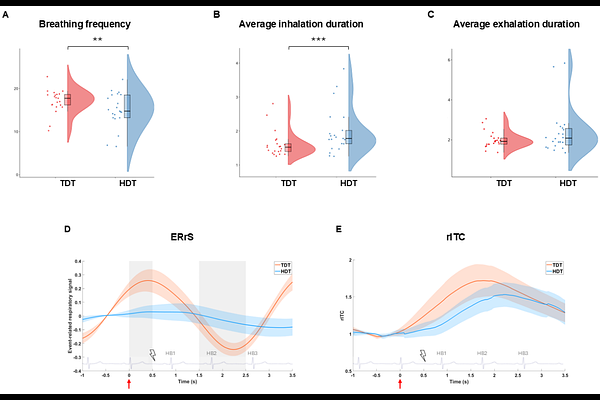Breathing strategies to influence perception: Evidence for interoceptive and exteroceptive active sensing

Breathing strategies to influence perception: Evidence for interoceptive and exteroceptive active sensing
della Penna, F.; Zaccaro, A.; Bayram, B.; Bubbico, F.; Perrucci, M. G.; Costantini, M.; Ferri, F.
AbstractRecent research indicates that humans continuously and automatically modulate their breathing to temporally align exteroceptive stimuli with specific phases of the respiratory cycle. This process has been interpreted as a form of active sensing and is associated with faster responses and improved perceptual accuracy. While converging evidence suggests that respiration also shapes interoceptive processing at both neural and behavioural levels, it remains unclear whether individuals actively adjust their breathing to optimize interoceptive performance. In this study, we examined whether healthy participants modulated their respiration during an interoceptive (heartbeat discrimination) and an exteroceptive (tactile detection) task. We analysed respiration both in terms of time-locked activity and inter-trial phase coherence relative to stimulus onset and assessed their relationship with perceptual accuracy. Our results demonstrated that participants systematically adjust their breathing in both amplitude and phase, synchronizing respiration to the anticipated (i.e., cued) onset of stimuli in both tasks. Crucially, task performance was enhanced during exhalation compared to inhalation, suggesting that respiratory modulation supports the perception of both interoceptive and exteroceptive signals.